JUNIPER
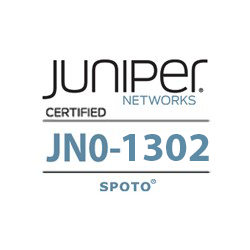 El Programa de certificación de redes Juniper (JNCP) es un programa de varios niveles de exámenes escritos y prácticos de laboratorio. Nuestra misión es validar el conjunto de habilidades de Juniper entre los principales profesionales de redes del mundo.
El Programa de certificación de redes Juniper (JNCP) es un programa de varios niveles de exámenes escritos y prácticos de laboratorio. Nuestra misión es validar el conjunto de habilidades de Juniper entre los principales profesionales de redes del mundo.Los estudios demuestran que los profesionales de TI formados en productos Juniper son un 34% más productivos. Empiece ya a demostrar su eficacia. Dé el siguiente paso en su carrera.
Elija una tecnología que le ayude a avanzar en su organización y en su carrera.
Consulte las pistas de certificación a continuación:
Automatización y DevOps: JNCIA-DevOps → JNCIS-DevOps
Nube: JNCIA-Cloud → JNCIS-Cloud → JNCIP-Cloud → JNCIE-Cloud
Centro de Datos: JNCIA-Junos → JNCIS-ENT → JNCIP-DC → JNCIE-DC
Diseño: JNCDA JNCDS-DC/JNCDS-SEC/JNCDS-SP
Enrutamiento y conmutación empresariales: JNCIA-Junos → JNCIS-ENT → JNCIP-ENT → JNCIE-ENT
Mist AI: JNCIA-MistAI → JNCIS-MistAI
Seguridad: JNCIA-SEC → JNCIS-SEC → JNCIP-SEC → JNCIE-SEC
Enrutamiento y conmutación de proveedores de servicios: JNCIA-Junos → JNCIS-SP → JNCIP-SP → JNCIE-SP
Traducción realizada con la versión gratuita del traductor www.DeepL.com/Translator
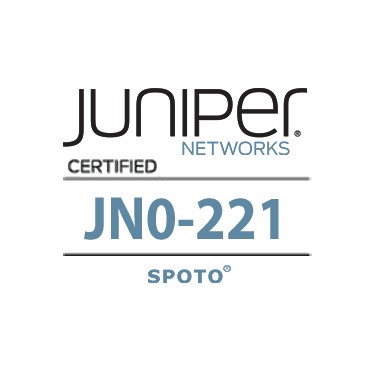
Juniper JN0-221 Volcados de examen y examen práctico
La certificación de Automatización y DevOps le permite demostrar su competencia en lenguajes y herramientas de scripting comunes para automatizar funciones de dispositivos y redes. JNCIA-DevOps, la certificación de nivel asociado de esta vía, está diseñada para profesionales de redes con conocimientos introductorios sobre herramientas de automatización y mejores prácticas. El examen escrito para la certificación verifica su comprensión de los conceptos de DevOps y automatización en lo que respecta a los dispositivos y soluciones de Juniper. Obtener SPOTOJuniper JN0-221dumps es la forma más fácil de convertirse enJuniper Networks Certified Automation and DevOps, Associate.(JNCIA-DevOps) en el menor periodo de tiempo.
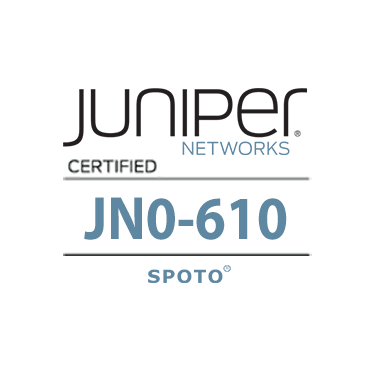
Juniper JN0-610 Exam Dumps & Practice Exam [2024]
La certificación Cloud le permite demostrar su competencia en arquitecturas de redes en la nube, como multiclouds, redes definidas por software, SD-WAN y otras tecnologías en la nube. JNCIP-Cloud, la certificación de nivel profesional de este track, está diseñada para profesionales de redes con conocimientos avanzados de redes en la nube, teoría y mejores prácticas. El examen escrito verifica su comprensión de los principios y tecnologías de redes en la nube. Obtener SPOTOJuniper JN0-610dumps es la forma más fácil de convertirse enJuniper Networks Certified Cloud, Professional(JNCIS-Cloud) en el menor período de tiempo.
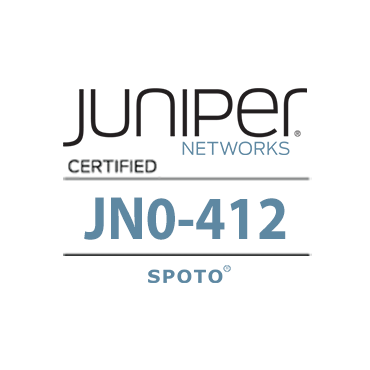
Juniper JN0-412 Exam Dumps & Practice Exam [2024]
La certificación Cloud le permite demostrar su competencia en arquitecturas de redes en la nube, como multiclouds, redes definidas por software, SD-WAN y otras tecnologías de nube. JNCIS-Cloud, la certificación de nivel de especialista de esta categoría, está diseñada para profesionales de redes con conocimientos intermedios de teoría, mejores prácticas y redes definidas por software. El examen verifica su comprensión de los principios y tecnologías de redes definidas por software. Obtener SPOTOJuniper JN0-412dumps es la forma más fácil de convertirse enJuniper Networks Certified Cloud, Specialist(JNCIS-Cloud) en el menor periodo de tiempo.
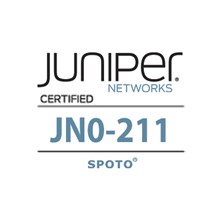
Juniper JN0-211 Exam Dumps & Practice Exam [2024]
La certificación Cloud le permite demostrar su competencia en arquitecturas de redes en la nube, como multiclouds, redes definidas por software, SD-WAN y otras tecnologías de nube. JNCIA-Cloud, la certificación de nivel asociado de esta categoría, está diseñada para profesionales de redes con conocimientos introductorios de las arquitecturas, teoría y mejores prácticas de redes basadas en la nube de Juniper Networks. El examen escrito verifica sus conocimientos de los principios y tecnologías de redes basadas en la nube. Obtener SPOTOJuniper JN0-221dumps es la forma más fácil de convertirse enJuniper Networks Certified Cloud, Associate(JNCIS-Cloud) en el menor periodo de tiempo.
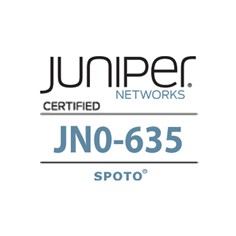
Juniper JN0-635 Exam Dumps & Practice Exam [2024]
La seguridad le permite demostrar un profundo conocimiento de la tecnología de seguridad en general y del software Junos OS para dispositivos de la serie SRX. JNCIP-SEC, la certificación de nivel profesional de esta vía, está diseñada para profesionales de redes con conocimientos avanzados del sistema operativo Junos de Juniper Networks para dispositivos de la serie SRX. El examen escrito verifica su comprensión de las tecnologías de seguridad avanzadas y las habilidades relacionadas con la configuración de la plataforma y la solución de problemas. Obtener SPOTOJuniper JN0-635dumps es la forma más fácil de convertirse enJuniper Networks Certified Security, Professional(JNCIS-SEC) en el menor periodo de tiempo.
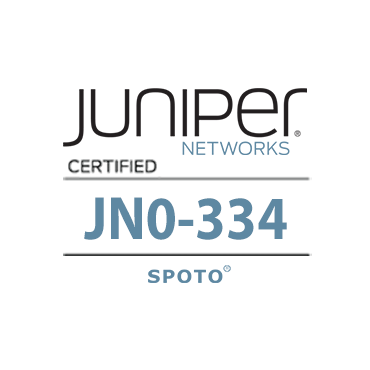
Juniper JN0-334 Exam Dumps & Practice Exam [2024]
El área de seguridad le permite demostrar un profundo conocimiento de la tecnología de seguridad en general y del software Junos OS para dispositivos de la serie SRX. JNCIA-SEC, la certificación de nivel asociado de esta vía, está diseñada para profesionales de redes con conocimientos de nivel principiante-intermedio del sistema operativo Junos de Juniper Networks para dispositivos de la serie SRX. El examen escrito verifica su comprensión de las tecnologías de seguridad y las habilidades relacionadas con la configuración de plataformas y la resolución de problemas. Obtener SPOTOJuniper JN0-334dumps es la forma más fácil de convertirse enJuniper Networks Certified Security, Specialist (JNCIS-SEC) en el menor periodo de tiempo.
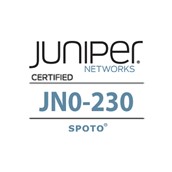
Juniper JN0-230 Exam Dumps & Practice Exam [2024]
El área de seguridad le permite demostrar un profundo conocimiento de la tecnología de seguridad en general y del software Junos OS para dispositivos de la serie SRX. JNCIA-SEC, la certificación de nivel asociado de esta vía, está diseñada para profesionales de redes con conocimientos de nivel principiante-intermedio del sistema operativo Junos de Juniper Networks para dispositivos de la serie SRX. El examen escrito verifica su comprensión de las tecnologías de seguridad y las habilidades relacionadas con la configuración de plataformas y la resolución de problemas. Obtener SPOTOJuniper JN0-230dumps es la forma más fácil de convertirse enJuniper Networks Certified Security, Associate (JNCIS-SEC) en el menor periodo de tiempo.
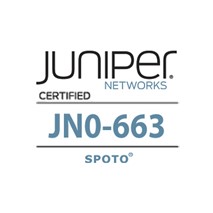
Juniper JN0-663 Exam Dumps & Practice Exam [2024]
El itinerario de enrutamiento y conmutación para proveedores de servicios le permite demostrar un profundo conocimiento de la tecnología de redes en general y de las plataformas de enrutamiento y conmutación para proveedores de servicios de Juniper Networks. JNCIP-SP, la certificación de nivel profesional de esta vía, está diseñada para profesionales de redes con conocimientos avanzados de implementaciones de enrutamiento y conmutación en Junos. El examen escrito verifica los conocimientos básicos de las tecnologías de enrutamiento avanzadas y las habilidades de configuración y solución de problemas de las plataformas relacionadas. Obtener SPOTOJuniper JN0-663dumps es la forma más fácil de convertirse enJuniper Networks Certified Service Provider Routing and Switching, Professional (JNCIS-SP) en el menor periodo de tiempo.
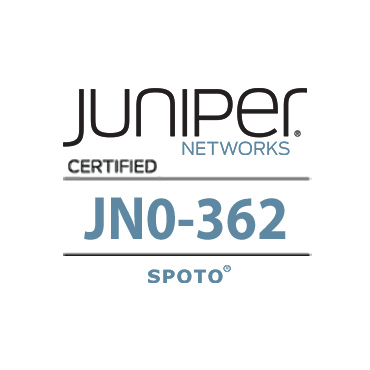
Juniper JN0-362 Exam Dumps & Practice Exam [2024]
El itinerario de Enrutamiento y conmutación para proveedores de servicios le permite demostrar un profundo conocimiento de la tecnología de redes en general y de las plataformas de enrutamiento y conmutación para proveedores de servicios de Juniper Networks. JNCIS-SP, la certificación de nivel de especialista de esta vía, está diseñada para profesionales de redes con conocimientos de nivel principiante a intermedio de implementaciones de enrutamiento y conmutación en Junos. El examen escrito verifica los conocimientos básicos de las tecnologías de enrutamiento y conmutación, así como las habilidades relacionadas con la configuración de plataformas y la solución de problemas. Obtener SPOTOJuniper JN0-362dumps es la forma más fácil de convertirse enJuniper Networks Certified Service Provider Routing and Switching, Specialist (JNCIS-SP) en el menor período de tiempo.

Juniper JN0-103 Volcados de examen y examen de práctica [2024]
La certificación JNCIA-Junos está diseñada para profesionales de redes con conocimientos de redes de nivel principiante-intermedio. El examen escrito verifica su comprensión de la funcionalidad básica del sistema operativo Junos de Juniper Networks. Dado que JNCIA-Junos proporciona un conocimiento básico del sistema operativo central de Juniper Networks, sirve como certificación de referencia para múltiples vías de certificación: Obtener SPOTOJuniper JN0-103dumps es la forma más sencilla de obtener la certificación Junos de Juniper Networks Certified Internet Associate(JNCIA) en el menor tiempo posible.